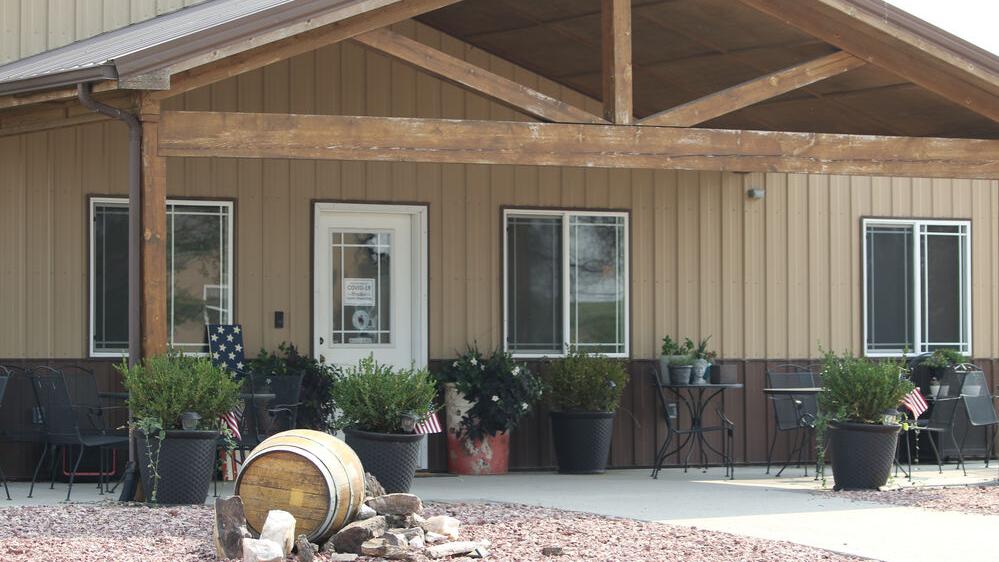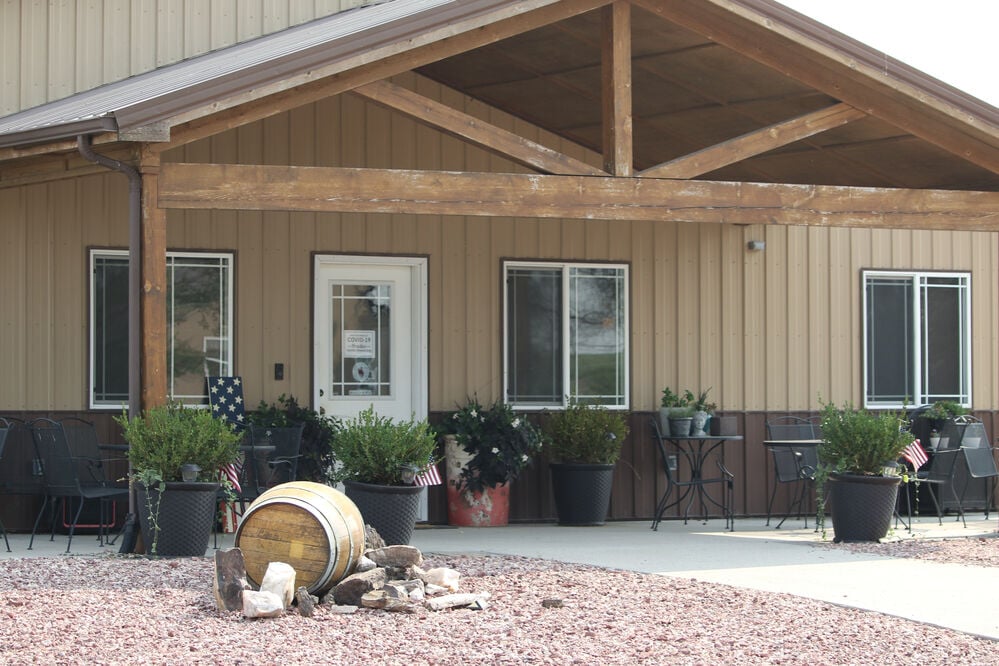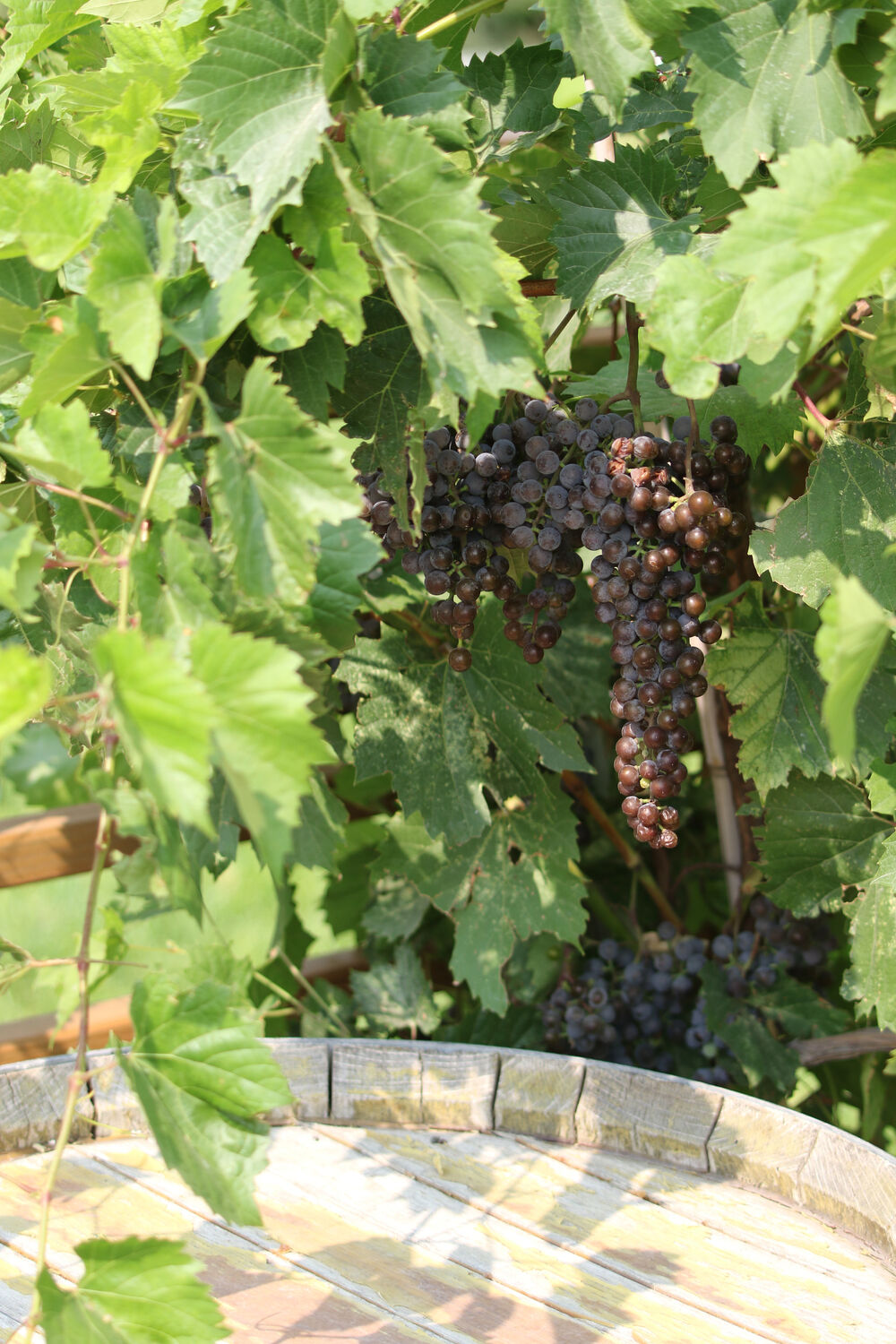
Fourth generation farmer Patrick Zimmerer introduced grape production to his family farm operation in 2001, to create what is now an established vineyard and winery located on the Wyoming-Nebraska border.
For Zimmerer, the idea of planting grape vines began in 2001 after attending an UNL extension presentation covering the possibilities of growing cold hearty grapes in the eastern Wyoming and the Nebraska Panhandle.
“In 2001, we planted our first grapes, about 300 vines,” Zimmerer said. “It sounded interesting and we had done a little research,and at the time, there was some grape growers in the Panhandle and we just kind of learned what they were doing.”
Zimmerer said, the maintenance and harvesting of the annual crop requires extensive manual labor to complete the process of tying up the vines as they grow, pruning the vines and a lengthy harvest of hand picking the grapes.
“We knew this going into it but just the intensive manual labor ... that part is difficult, that is always a struggle,” Zimmerer said.
The crucial establishment of vines is an aspect which makes grape production so different than typical perennial crop production across the region, Zimmerer said. Vines will not begin to produce fruit until the roots have been established for a minimum of three years.
“The whole concept of growing grapes is very different because they are like a tree, they come back every year.
"Our grapes are cold hardy hybrids so most of them go through our winters fairly well and some of our vines are getting older, and we are starting to see some winter kill but we are not really sure how long and how far the vines will go,” Zimmerer said.
Most grape production of a different variety takes place in much different climates, Zimmerer said, but cold hearty grape varieties allow the grape vines to excel in climates and soils in eastern Wyoming and the Nebraska Panhandle.
“In California, they have grapes and vineyards that are 100 years old but we have a very different clock,” Zimmerer said, “When the weather really goes from one extreme to the other in a very short time period, that really is a critical time that we hope the grapes are dormant or thinking about being dormant.”
When first establishing an orchard, Zimmerer said, growers can purchase vines that may have a small root system or vines that are two to three years old with a more extensive root system, but regardless of root establishment the vines a number of years before producing fruit.
“You want that root system to be very deep and developed in case we do have a hail or freeze,” Zimmerer said, “We have had some pretty catastrophic hail in the past but the vines themselves are pretty resilient and they will come back.
"For the most part the grapes are pretty self sufficient, we have had to add a few micro-nutrients along the way but the grapes actually like the poor soils. They don’t need a lot from the soil and so that is kind of a bonus here in some of our areas that we planted aren’t the best quality soil.
"We have about 14 varieties in the ground. And out of all of our tests and experiments we probably would stick to six or seven of those, knowing the good and the bad and what lives here and what thrives here.”
Grapes take on a different type of irrigation plan and systems than traditionally grown crops in the region, Zimmerer said, the irrigation process occurs on drip irrigation system instead of the typical pivot, flood or other various irrigation methods.
Early on in the planting and growing process, the vines require four to five gallons a week, then move along to have decreased irrigation need as the roots develop.
“As our vines have gotten older, most of the roots go pretty deep, so the irrigation needs are there when we have a very dry year like this year,” Zimmerer said. “Especially in this heat a lot of it is just trying to get the grapes to not ripen too quickly.”
Moving along the growing season and approaching harvest, Zimmerer said, everything becomes very timely in terms of planning harvest.
“We don’t always have time in this area so we test the grapes for sugar, which is our most important test to make sure that they are where they should be,” Zimmerer said, “We should at least be looking for a 23% sugar content, which really when it converts into wine, that will give you wine at about 12% alcohol which is what most wines fall into, the 10 to 14% range.”
Zimmerer said, the process of growing grapes and converting the yearly harvest into wine is all done at the families winery, being the only businesses in the state of Wyoming to grow and process their wine completely in house.
Zimmerman has expanded the grape production to include the Table Mountain Vineyards portion of the family business, offering the public opportunity to host events and buy locally grown wine.
August 26, 2020 at 08:00PM
https://ift.tt/32uVFeE
Raising grapes on the Wyoming-Nebraska border at Table Mountain Vineyards - Scottsbluff Star Herald
https://ift.tt/3eO3jWb
Grape




No comments:
Post a Comment